Okay before we get started, we are not doing a head to head to see which tool is better. We are just comparing the two tools to help you understand the differences between a full size and compact wrench. Plus to cover some other items that may be helpful when you are looking for a cordless impact wrench. If you are not familiar with an impact wrench, here is a good overview from Wikipedia.
“In operation, a rotating mass (the hammer) is accelerated by the motor, storing energy, then suddenly connected to the output shaft (the anvil), creating a high-torque impact. The hammer mechanism is designed such that after delivering the impact, the hammer is again allowed to spin freely, and does not stay locked. With this design, the only reaction force applied to the body of the tool is the motor accelerating the hammer, and thus the operator feels very little torque, even though a very high peak torque is delivered to the socket. “
This is a comparison between the Milwaukee High Torque Impact Wrench (2663-22) and the Milwaukee Compact Impact Wrench (2652-22). Okay let’s get started with some of the similarities between the two tools.
Obviously they are both Milwaukee tools. Which means both are backed by a 5 year warranty. Milwaukee makes some of the best impact wrenches on the market, just talk to anyone who owns one and we are confident you will get the same answer.
- Volts – Both tools use the Milwaukee Red Lithium M18 batteries. Also both kits come with two high capacity XC batteries and a charger.
- Motor Layout – Both wrenches are built around a 4 pole frameless motor. A 4 pole motor can produce more torque than a 2 pole configuration. If you are looking for a tool with high torque and lots of power, the 4 pole frameless motor is probably the best on the market.
- Anvil Size – Both wrenches use a 1/2″ anvil. While the type of anvil is different, the size is the same.
Well that was easy. That is pretty much all they have in common. Same manufacturer, warranty, motor design, anvil size and volts. Let’s see how these are different.
- Anvil – As noted both are 1/2″ anvils, but if you look closely, they are actually different. The compact uses a detent pin while the high torque uses a friction ring also called a hog ring. Milwaukee does sell both tools with either configuration. So what is the difference? The friction is great for one handed socket changes. The ring holds the socket on the anvil by applying outward pressure. They are easier to get on and off. The detent pin does take two hands to get a socket on and off. You need to push the pin down and slide the correct style of socket on the wrench. When you need to take off the socket, you have to push the pin back in to slide the socket off. As you can see this style does take two hands. There are many advantages of a detent pin, but one advantage is the socket stays in place and will not come off until the user wants it off.
- Weight – As you would expect the weight would be different with the high torque wrench and the compact wrench. The high torque weighs about 6.7 lbs while the compact weighs only 4.1 lbs. Not a huge difference, but try using it all day long and you will see the difference.
- Size – Again one says compact, so you know one is shorter, but how much? The high torque wrench measures 8-7/8″ while the compact measures only 5-3/4″ Might not sound like a huge difference, but it can mean the difference between getting a tool in a tight spot and getting the job done and not getting the job done.
- Speed – While the high torque is heavier and bigger, so you would think the high torque would be faster, right? The high torque has an RPM of 0-1,900, while the compact version is 0-2,200.
- Impacts – The compact is a little faster, but what about the IPM? The high torque has an IPM of 0-2,200, while the compact has an IPM of 0-3,200. So far it seems like the compact is the way to go? Well before we jump into that, let’s look at the torque. Considering one is called the high torque, my guess is that one would be much better for torque.
- Torque – Okay, the high torque has to have more torque than the compact, right? The high torque puts out a whooping 450 ft-lbs of torque, while the compact puts out 2,200 in-lbs of torque. How could the compact put out so much torque? Oh wait it is in-lbs of torque. Let’s see what that would be in ft-lbs of torque. It would be equivalent to 184 ft-lbs of torque. That is a huge difference. The high torque impact puts out over 100% increase of torque over the compact.
One other note. The compact has an LED while the full size does not.
So which one do you go with?
All right so which on do you go with? Well that really depends upon what you are doing. Both are quality tools with a proven track record. Both have a great motor design. So the question really comes down to size and torque need. Once you figure this out, just pick the anvil style you want and you’re set.
If you are a small engine guy or mechanic doing some tire rotations, the compact is the best option. With 184 ft-lbs of torque, you can break loose any nut or bolt on a car especially considering most lug nuts are below 100 ft-lbs of torque. If you’re a contractor, residential or light commercial, the compact is also a huge advatange for the size and amount of torque.
However if you are working with much bigger machines or bolts, you can’t pass up the high torque wrench. At 450 ft-lbs of torque, there probably isn’t much of anything you can’t break free or tighten to specs.
Again only you really know what applications you will be using these tools for.

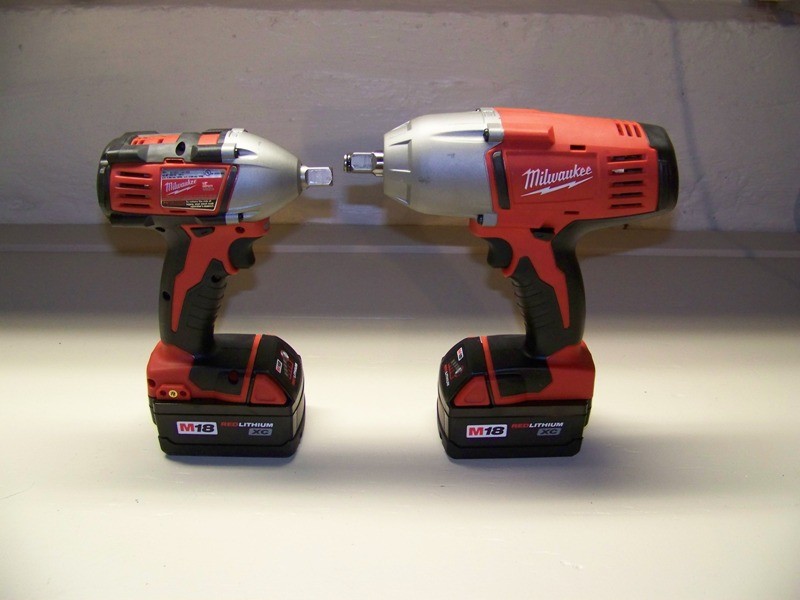
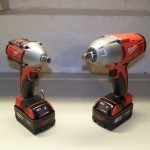
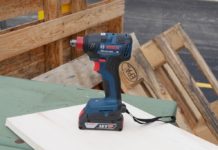
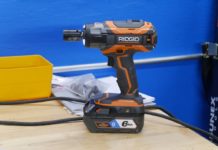
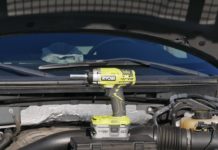
Great review guys, now I want both, lol. I don’t understand why anyone would opt for the friction ring, but they sell them every day. I think I’d more likely be a buyer on the compact in 3/8. I want that 1/2 to have insane power.